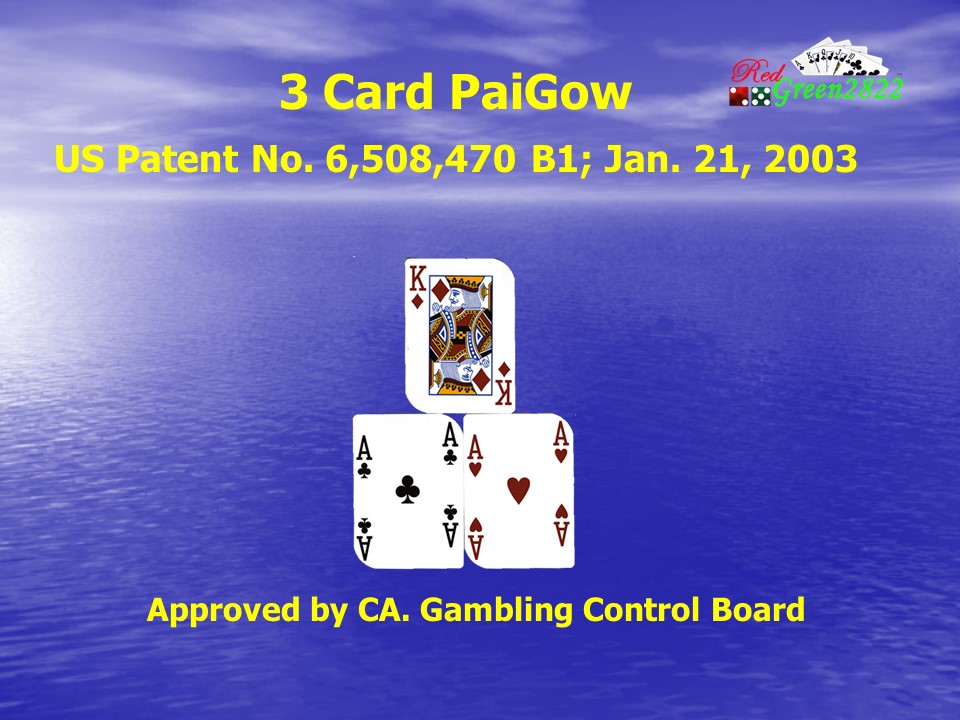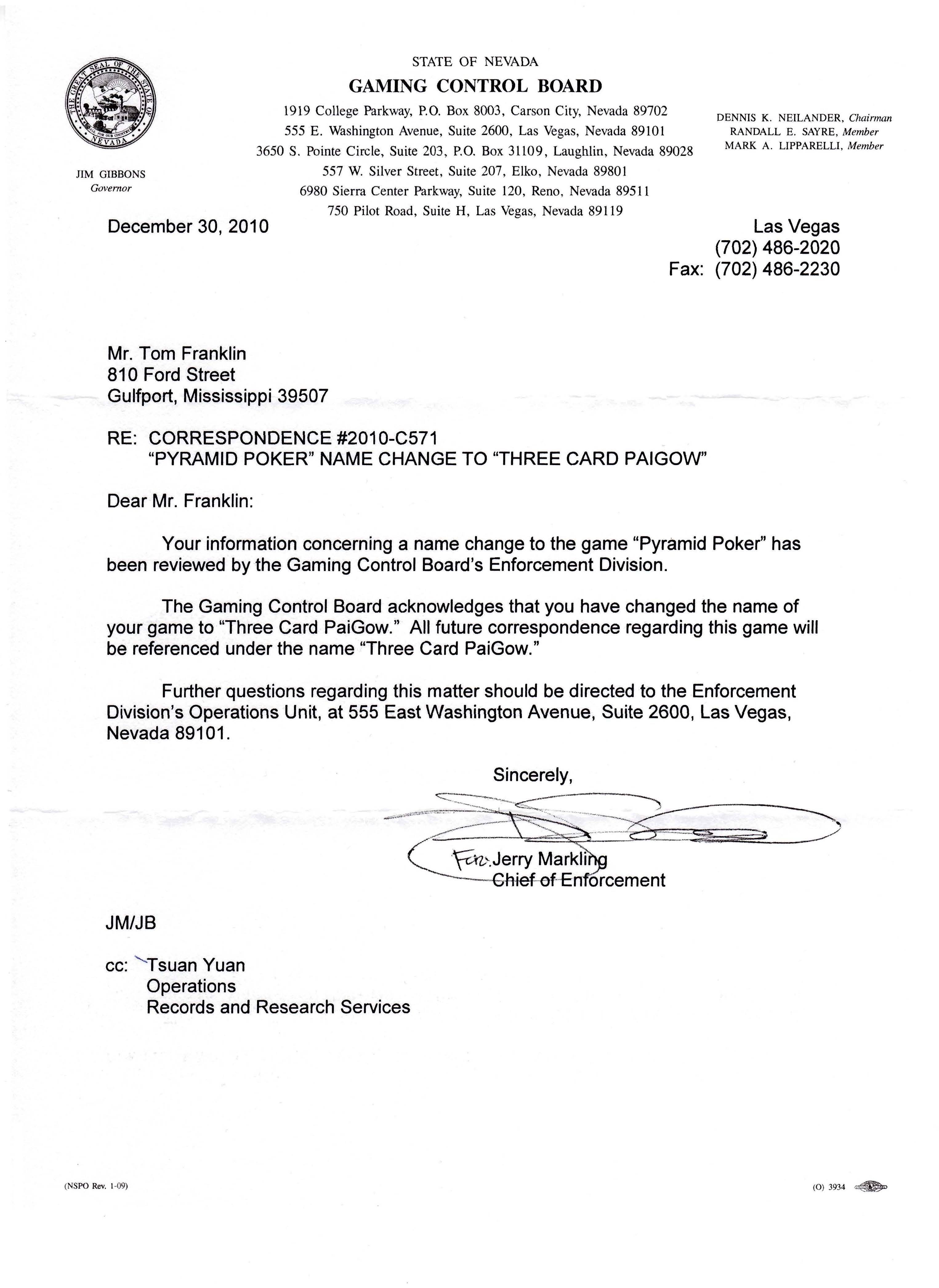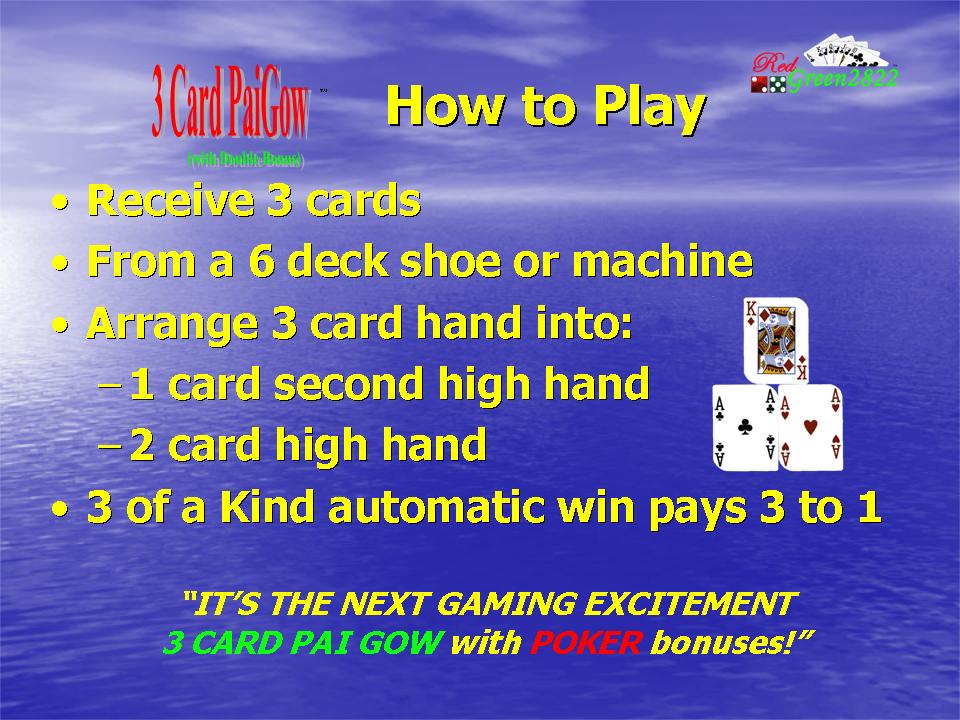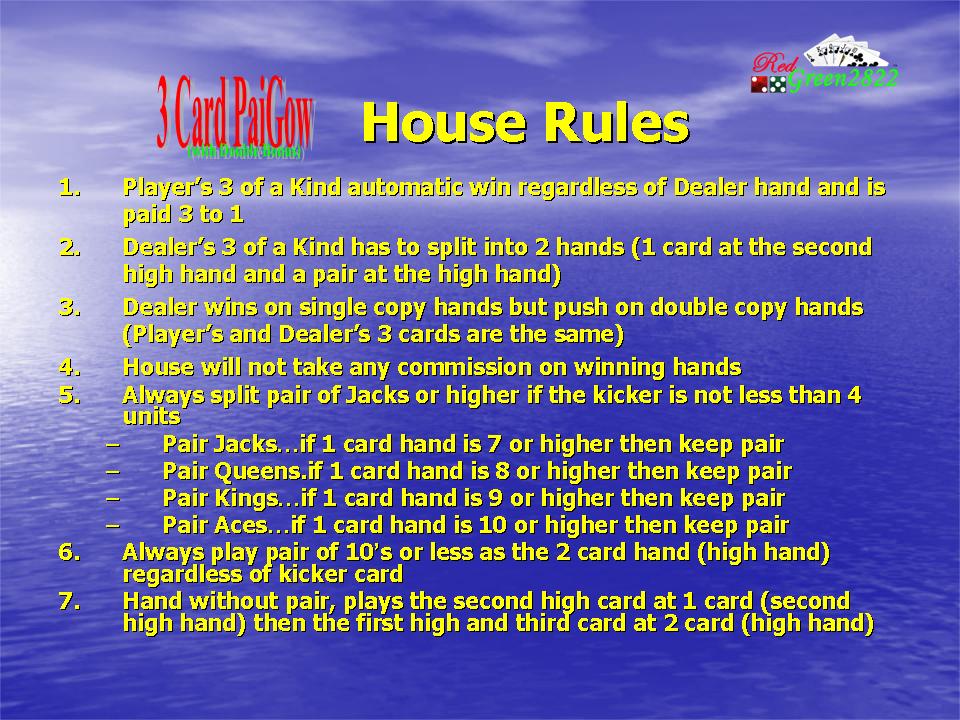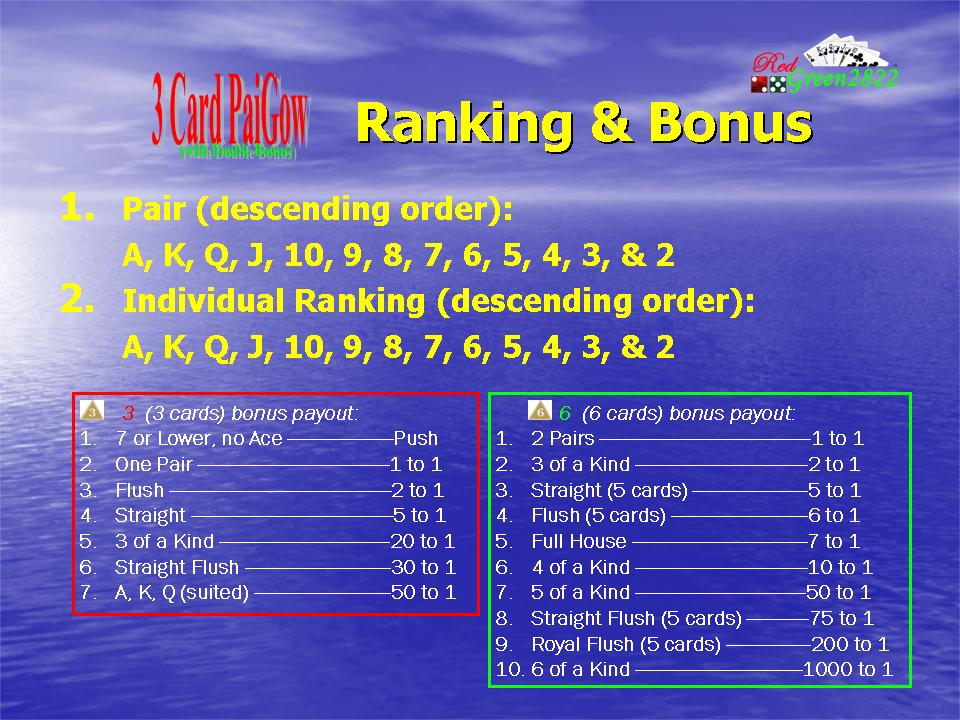3 Card PaiGow
Table Sign
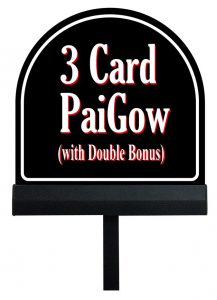
Payout Sign
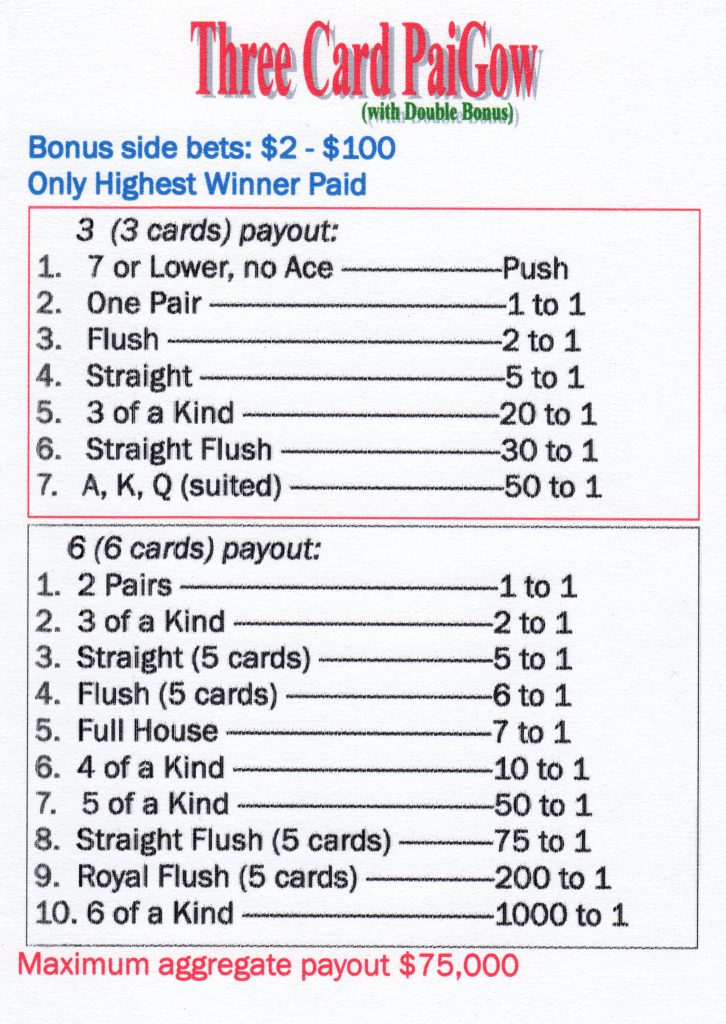
Green Layout
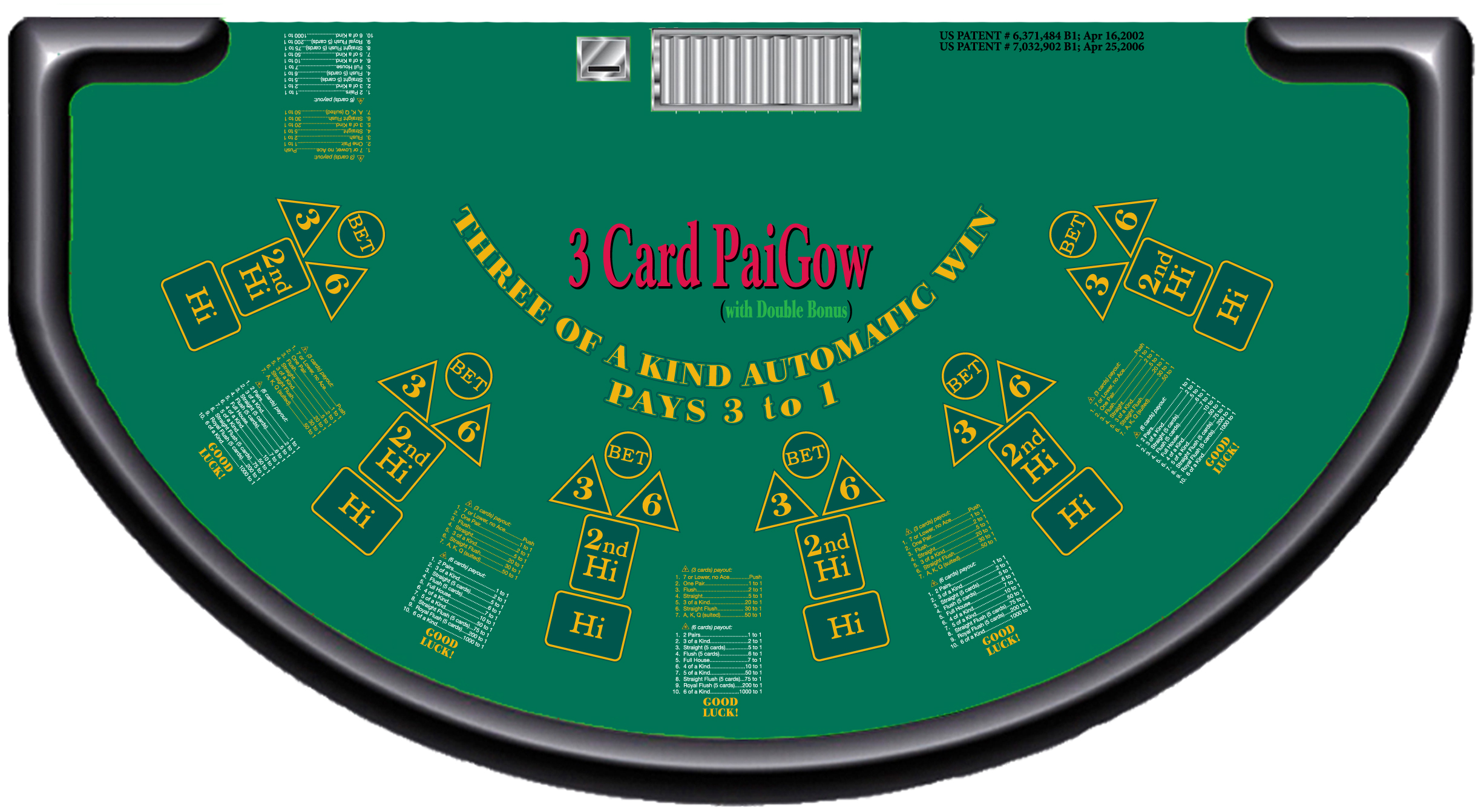
Brown Layout
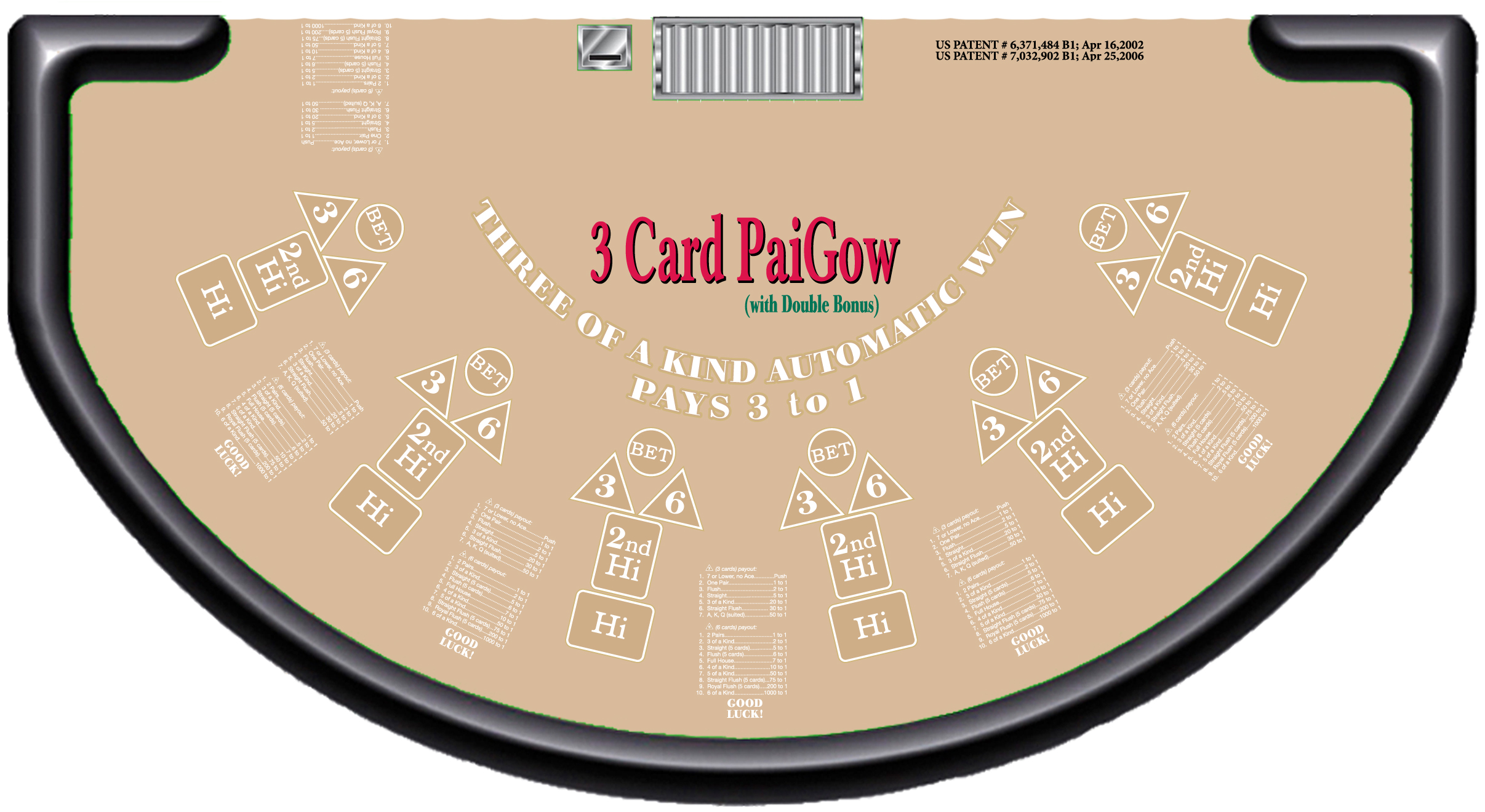
PLAYING RULES WITH DOUBLE BONUS
The game requires at least one Player and one House Dealer. Each Player places an ante wager at a Player wagering area on the table layout. The game is played House bank only with no rotating bank. Winning wager is paid at even money. This game plays Poker ranking, except there is no Flush or Straight. Each Player wagers on whether the Player’s hand will outrank the Dealer’s hand. The game is played with six conventional decks of fifty-two Poker playing cards. After the cards are randomized, such as through shuffling and cutting, the House may use 3 dice to determine which Player or the House Dealer receives the first set of 3 cards. The Player and the House Dealer’s positions are numbered in a counter-clockwise fashion according to their betting circles. The House Dealer deals one card at a time from the shoe or shuffle machine (at the House’s option). Starts from the House Dealer’s right to left (counter-clockwise, same as Pai Gow Poker), the House Dealer’s positions are 1, 9 and 17. The location corresponding to the number rolled receives the first card. The betting circles without a wager will not receive any card. Beginning from the betting circle’s location which is assigned the number rolled by 3 dice. (this location with or without a wager must receive first card), then skips to the next betting circle with a wager and proceeds counter-clockwise until each Player and the House Dealer receives three cards. No other cards are dealt during game play.
After the Players and the House Dealer receive their three cards, the Players arrange their cards into two hands, a one card hand (second high hand) and a two card hand (high hand). Players are allowed to arrange their high hand and second-high hand in any fashion desired so long as the high hand outranks the second-high hand. Conversely, if the second high hand outranks the high hand, it is considered an automatic losing hand. That is, Players are not required to follow the optimum strategy. After all the Players finish setting their hands, the House Dealer exposes his/her three cards then sets it according to the House way as described below:
House Rule:
- Always split Three of a Kind into two hands (one card at second high hand and a pair at high hand).
- Always split pair of Jacks or higher if the kicker is not less than 4 units
- If J, J & 7 or higher then keep pair
- If J, J & 6 or less then split pair
- If Q, Q & 8 or higher then keep pair
- If Q, Q & 7 or less then split pair
- If K, K & 9 or higher then keep pair
- If K, K & 8 or less then split pair
- If A, A & 10 or higher then keep pair
- If A, A & 9 or less then split pair
- Always play pair of 10’s or less as the two card hand (high hand) regardless of kicker card.
- If no pair then always play the second high card in the one card hand, the first and the third high card in the two card hand. (i.e. if a hand has an 8, a 10 and a King, then play the 10 in the one card hand (second high hand) and the 8 and the King in the two card hand (high hand).
- Players allow to play more than two hands. Or according to House policy.
- Player may place one or two side bets. Or according to House policy.
- Bonus side bets allowed are $2, $3, $4, $5, $10, $15, $20…increments of $5 up to maximum $100. Or according to House policy.
Comparison
House Dealer will compare his/her one card hand to the player’s one card hand, then his/her two card hand compared to the player’s two card hand. Win, lose or push as described below:
Player hands:
- Wins / wins – Win, paid even money.
- Wins / loses – Push, wager is neither collected nor paid.
- Loses / wins – Push, wager is neither collected nor paid.
- Wins / ties – Push, wager is neither collected nor paid.
- Ties / wins – Push, wager is neither collected nor paid.
- Ties / ties – Push, wager is neither collected nor paid.
- Loses / loses – Lose, wager is collected.
- Loses / ties – Lose, wager is collected.
- Ties / loses – Lose, wager is collected.
Ranking
- First high – Pair, descending order: A,K,Q,J,10,9,8,7,6,5,4,3&2.
- Second high – Individual ranking: A,K,Q,J,10,9,8,7,6,5,4,3&2.
Note:
- Player’s with a Three of a Kind is an automatic win regardless of the Dealer hand and is paid 3 to 1.
Dealing Procedure
The House may use another method (Black Jack Dealing Procedure) to deal this game. The House Dealer shuffles the cards, a Player cuts the deck. The House Dealer deals three cards (one in turn from the shoe or three at a time from the shuffle machine at the House’s option) in sequence to the players and the House Dealer in clockwise order, the betting circle without a wager will not receive any cards. First player to the House Dealer’s left receives the first set of three cards then skips to the next betting circle with a wager and proceeds clockwise until each Player and the House Dealer receives three cards.
Bonus Side Bet
In addition to the mandatory bet played against the Dealer, the player has the option to make a bonus side bet. Both the Dealer’s hand and the Player’s hand are used to determine the outcome of the side bet. The player will be paid if the best 5 of the combined 6 cards match any of the following winning combinations:
- ‘6 Card Side Bet’:
- In addition to the mandatory bet played against the Dealer, the Player has the option to make a “6 Card side bet”. Both the Dealer’s 3 card hand and the Player’s 3 card hand are used to determine the outcome of the side bet. The Player will be paid if the best 5 of the combined 6 cards match any of the following winning combinations:
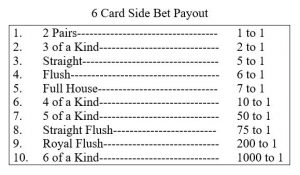
Maximum aggregate bonus limit payout. Or according to House policy.
The outcome of the base wager has no bearing on the 6 Card side bet.
Note:
A. A flush can be composed of pairs or triplets, which are ignored. For example, the following are valid flushes:

B. When determining the 6 Card side bet, if the Player’s and Dealer’s combined hand creates multiple separate possible combinations (e.g. a flush and a full house) only the HIGHEST of the combinations will be paid out. The example below would be paid as a full house only.

- ‘3 Card Side Bet’:
- In addition to the mandatory bet played against the Dealer, the Player has the option to make a “3 Card side bet”. Only the Player’s 3 card hand are used to determine the outcome of the side bet. The Player will be paid if the 3 cards match any of the following winning combinations:
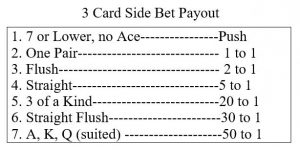
The outcome of the base wager has no bearing on the 3 Card side bet.
ANALYSIS WITH DOUBLE BONUS
Six Deck Version
Pyramid Poker with Double Bonus is a variation of the single deck version of Pyramid Poker. The game is played like Pai Gow Poker. Six standard decks of 52 cards with no jokers are used.
Rules of Play
Play begins with each player making a mandatory primary bet that is played against the dealer. The player also has the option of making any of two side bets (see “Side Bets” below). Each player and the dealer will receive three cards face down. The player must arrange his cards into a one-card front hand and a two-card back hand. The back hand must not be lower than the front hand. The hand ranking, from highest to lowest, is as follows:
- One Pair (AA,KK,QQ … 22)
- High Card (A,K,Q … 2)
The player’s front hand will be compared to the dealer’s front hand and the player’s back hand will be compared to the dealer’s back hand. The player must win both hands to win. The possible outcomes of the player’s hands versus the dealer’s hands are shown in the chart below:
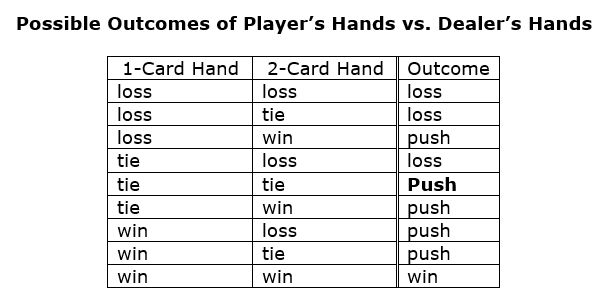
A player will be paid 3 to 1 automatically if his three cards make a three of a kind, regardless of the dealer hand. A dealer’s three of a kind is not an automatic winner.
After all players have set their hands, the dealer opens his hand. The dealer must set his hand according to the house-way strategy below:
House Way Strategy
- Always place the 2nd highest card in the front hand if the hand has no pairs.
- Always play a pair of Twos through Tens in the back hand.
- Split any pair of Jacks through Aces according to the following chart:
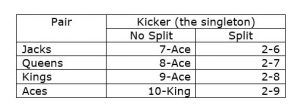
Side Bets
In addition to the mandatory primary bet played against the dealer, the player has the option to make any of the following two side bets:
A. RedGreen Side Bet (6 Cards)
Both the dealer’s hand and the player’s hand are combined to determine the outcome of the RedGreen side bet. The player will be paid if the best 5 of the 6 cards combined match any of the following winning combinations:
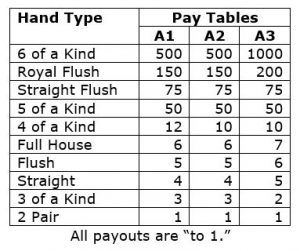
Notes
A flush can be composed of pairs or triplets, which are ignored. For example, the following are valid flushes:
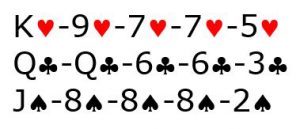
When determining the outcome of the RedGreen side bet, if there are multiple winning combinations (e.g., a flush and a full house), only the highest of the combinations will be paid. The example below would be paid as a full house only:
B. Pyramid Side Bet (3 Cards)
The Pyramid side bet, like the Pair Plus bet in Three Card Poker, is based on the player’s three cards. Regardless of how the player hand is set and what the dealer hand is, the bet is paid according to the following pay tables:
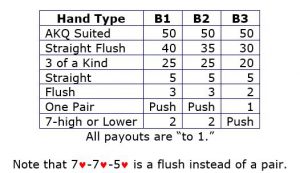
The outcome of the primary bet has no bearing on the two side bets.
Mathematical Analysis
There are 5,013,320 3-card hands that can be dealt from six decks but only 455 hands are distinct for math analysis purposes: 286 non-pair hands, 156 one-pair hands and 13 triplets.
A computer program was developed to cycle through all possible player-dealer hand combinations. For each 3-card player hand, the program would deal all possible 3-card hands to the dealer from the remaining 309-card deck and set each dealer’s hand according to the house-way strategy. When there were two ways of setting the player hand, it would play the player’s hand both ways and determine the optimal play by comparing the player’s expectations. The better play was selected and its expectation was properly weighted and added to the overall player expectation. At the end of the analysis, the house advantage was derived.
The following table shows the possible outcomes if the player plays the optimal strategy:
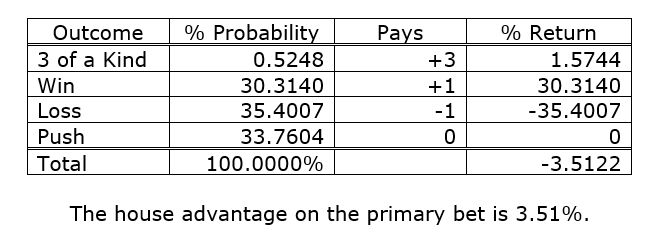
Side Bets
RedGreen Side Bet
The hit frequency for all three pay tables is 27.647%.
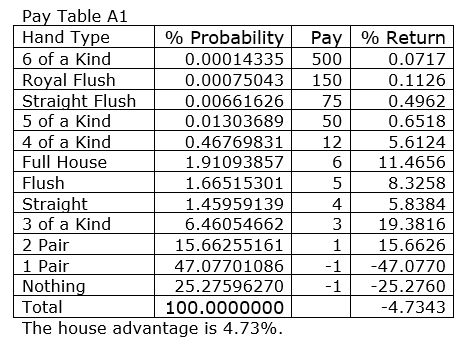
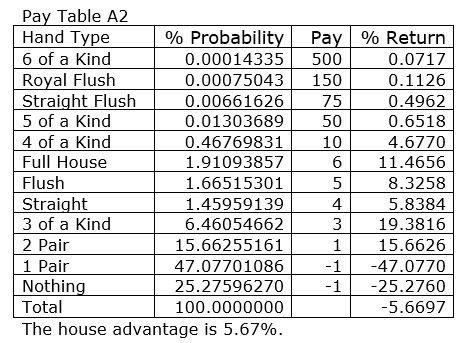
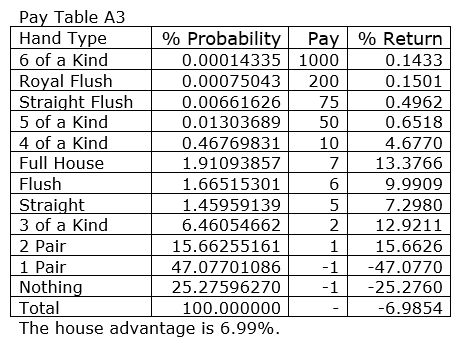
Pyramid Side Bet
The hit frequency for all three pay tables is 33.3041%.
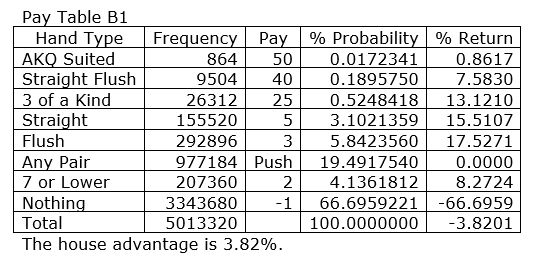
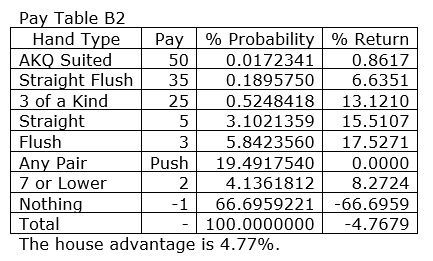
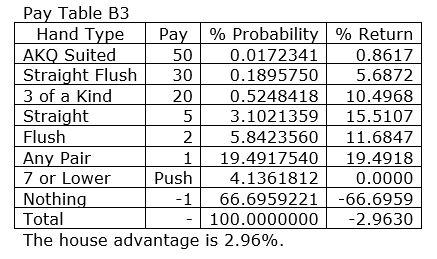
Player’s 3-card Hand Expectations
EV(1) … % Player expectation for placing the 2nd highest card in the low hand
EV(2) … % Player expectation for placing the lowest card in the low hand

Presented By: Stanley Ko
GAMBOLOGY – PO Box 82225 – Las Vegas, NV 89180 – (702) 258-9685
August 26, 2007
